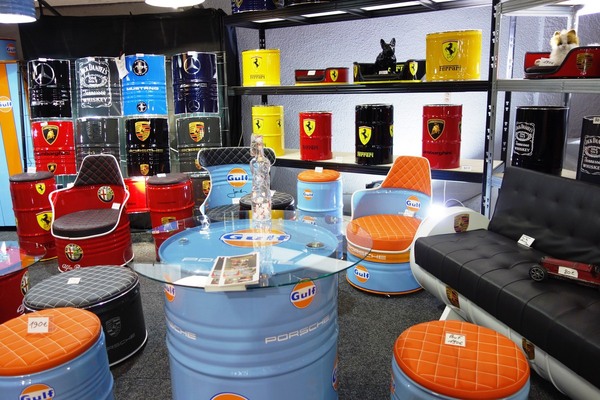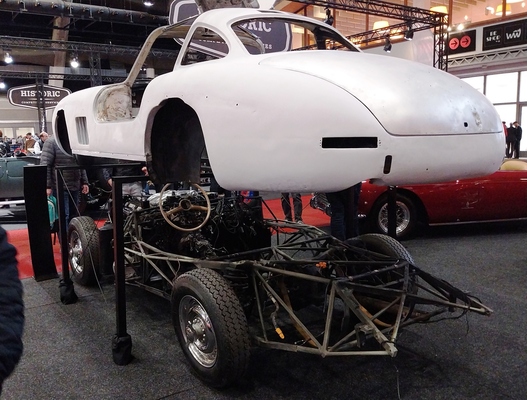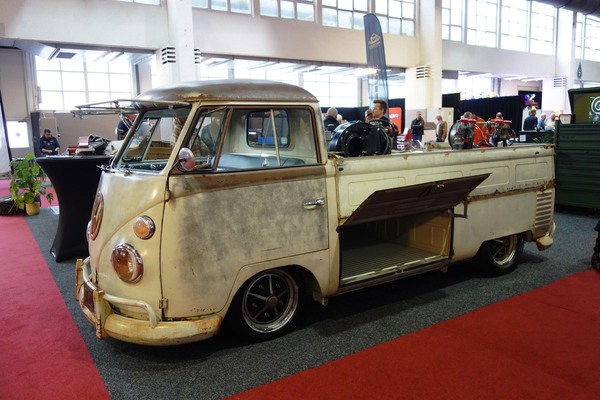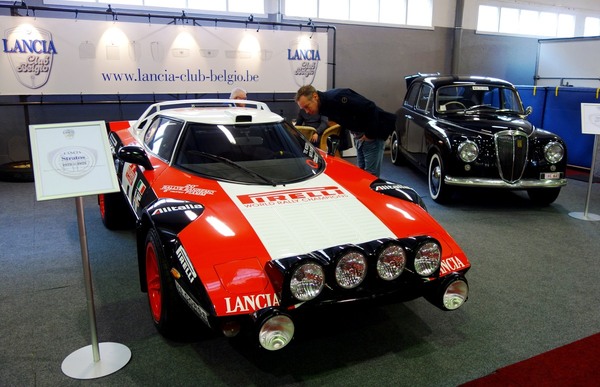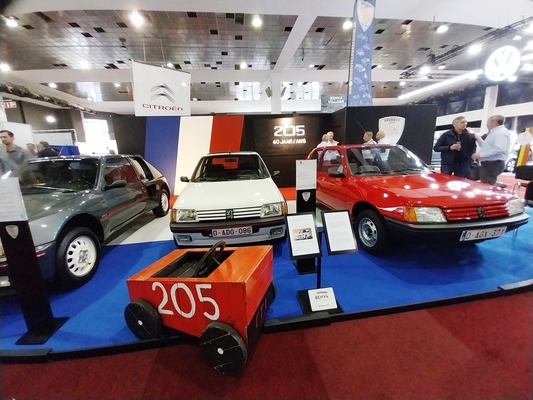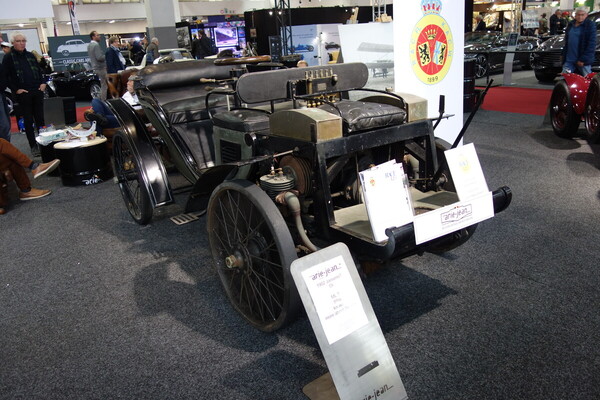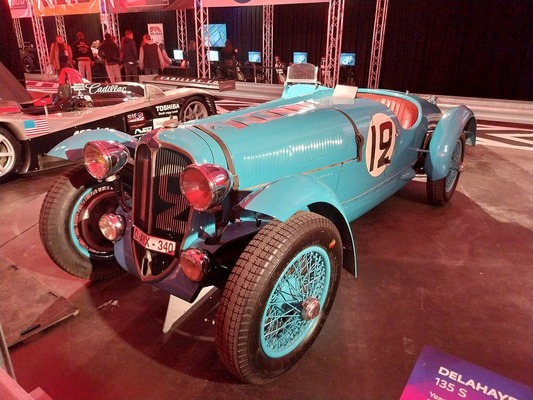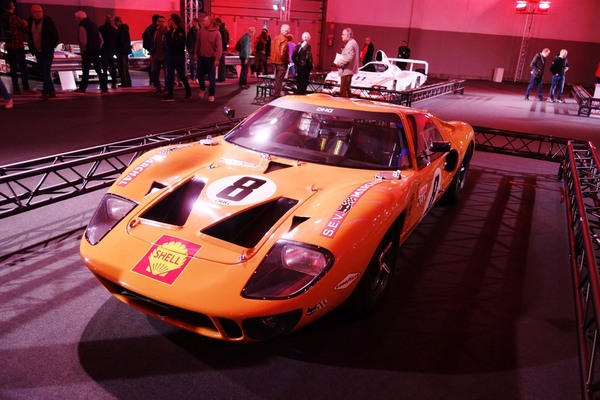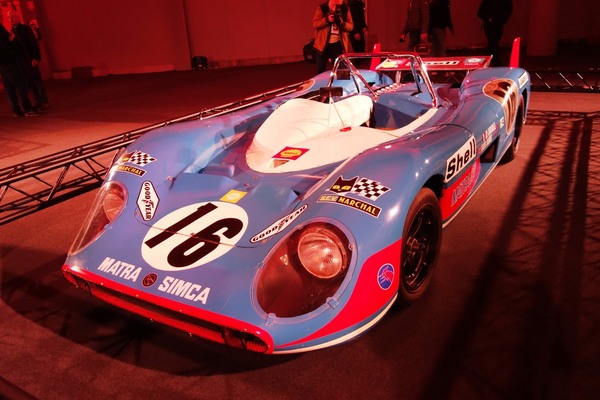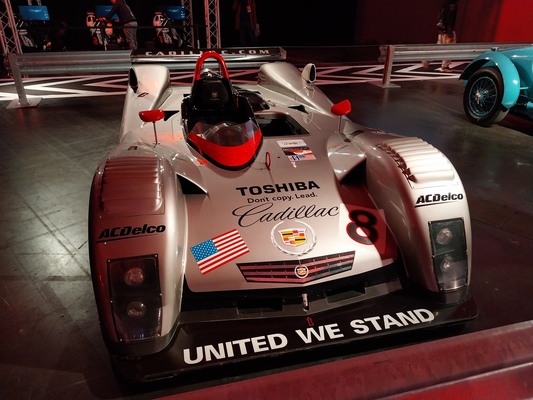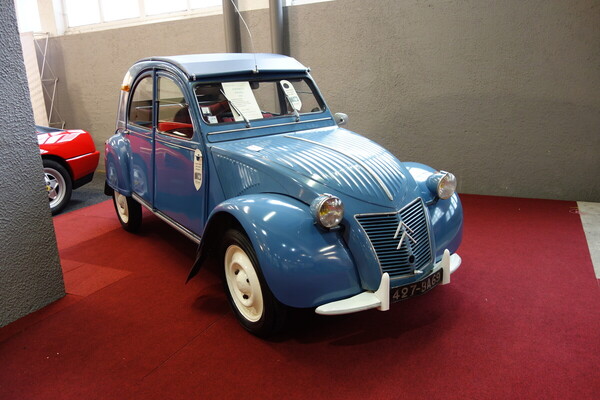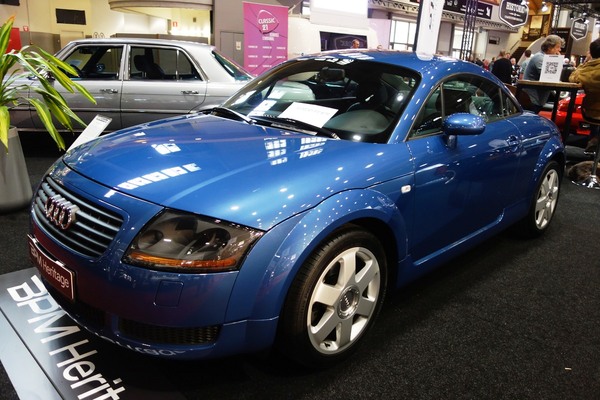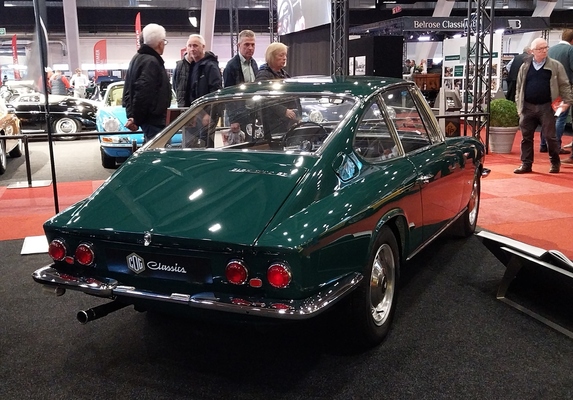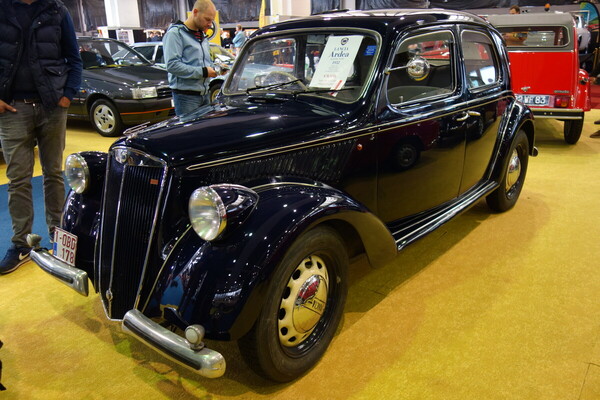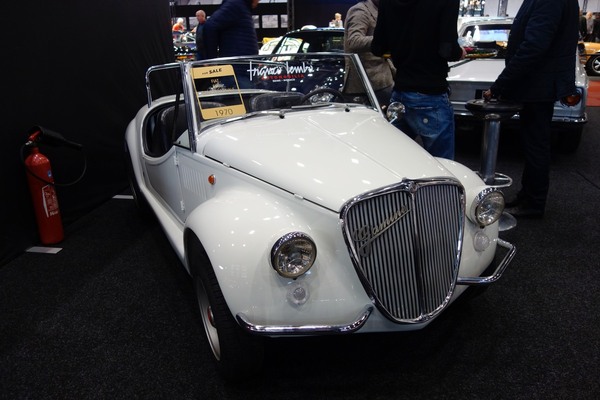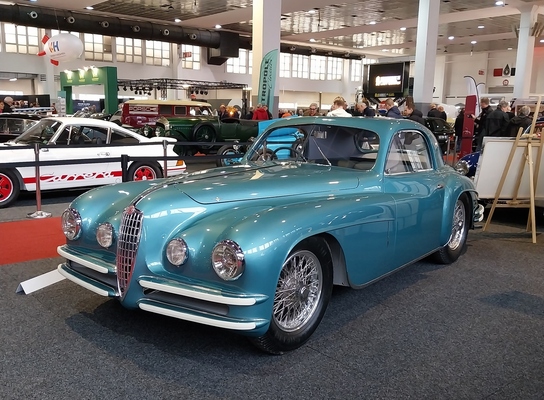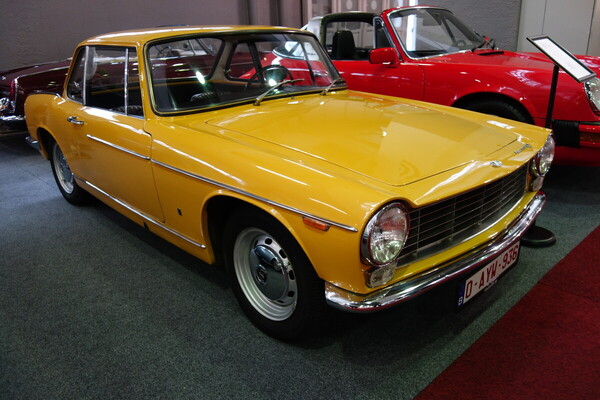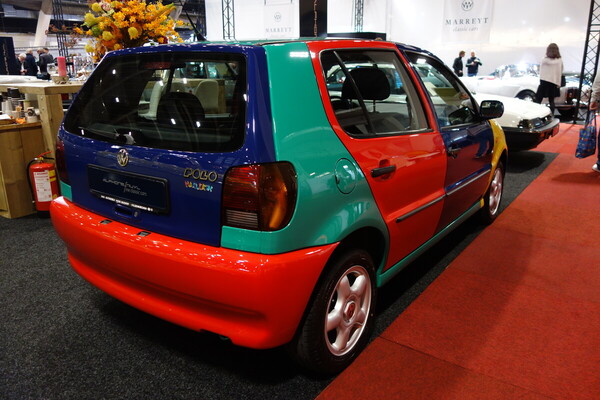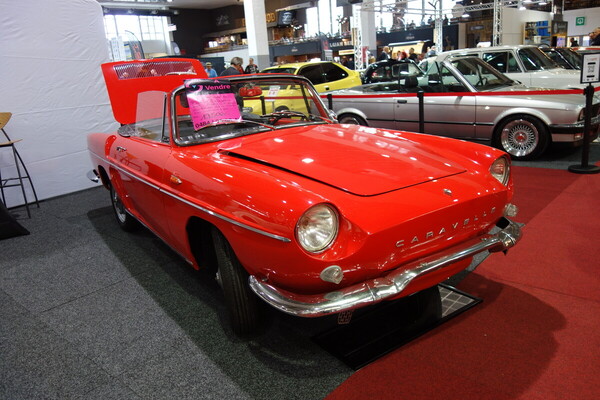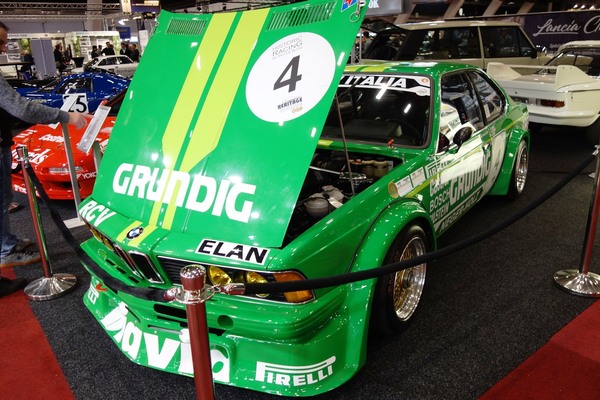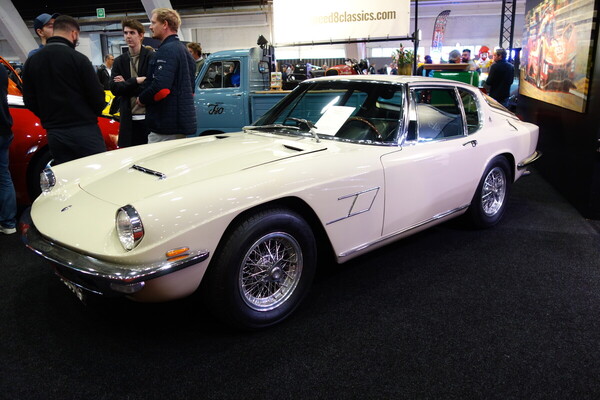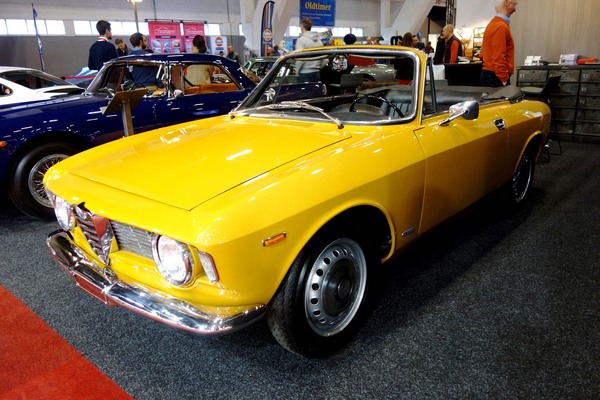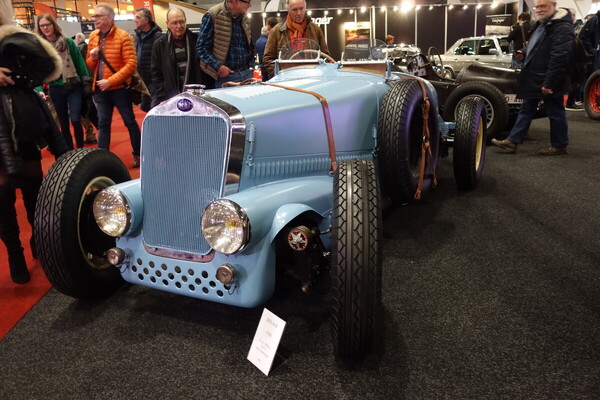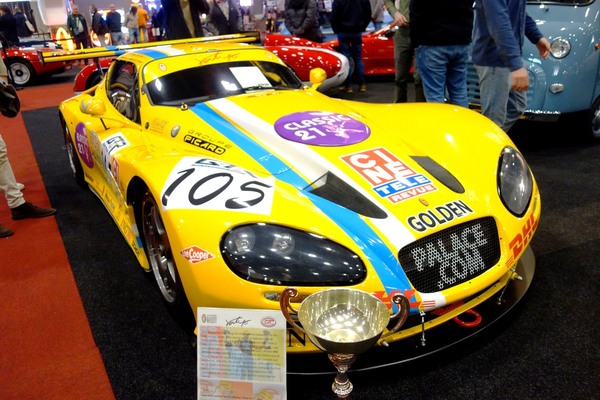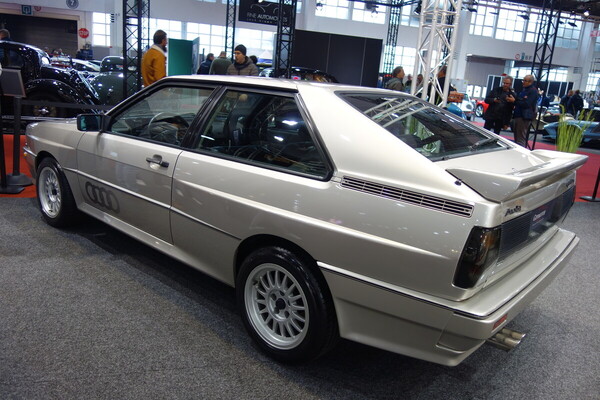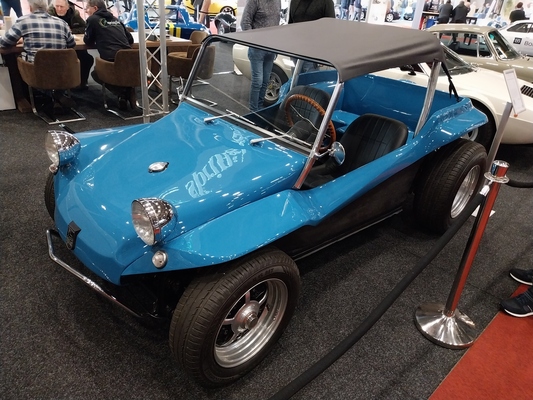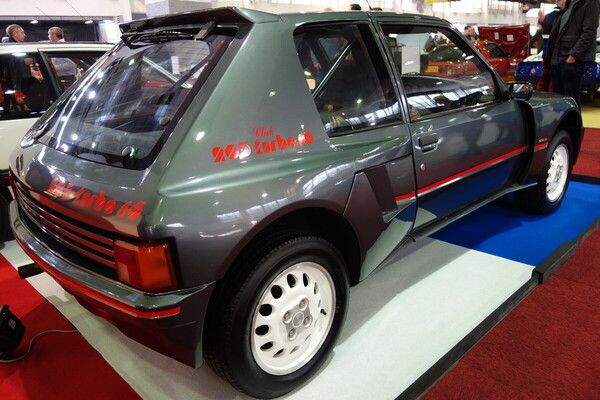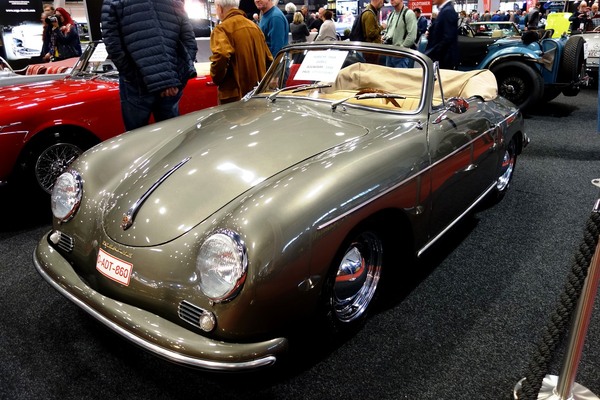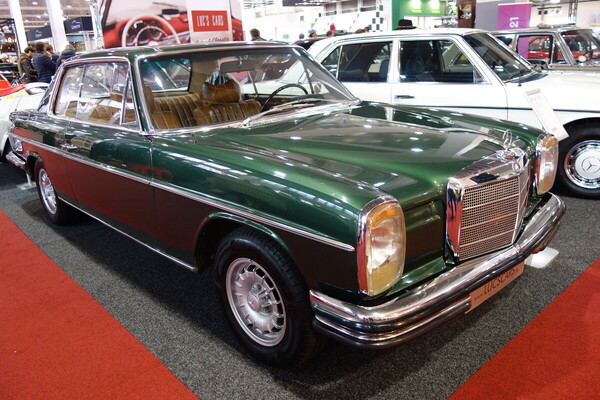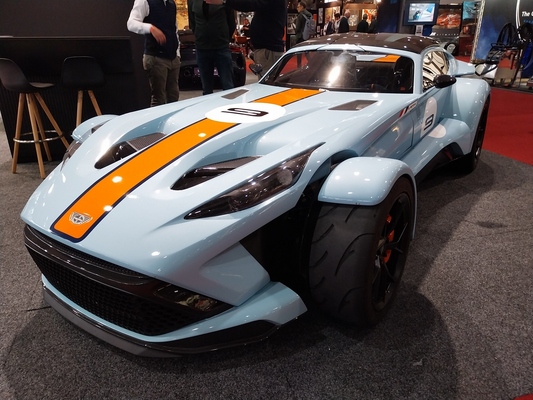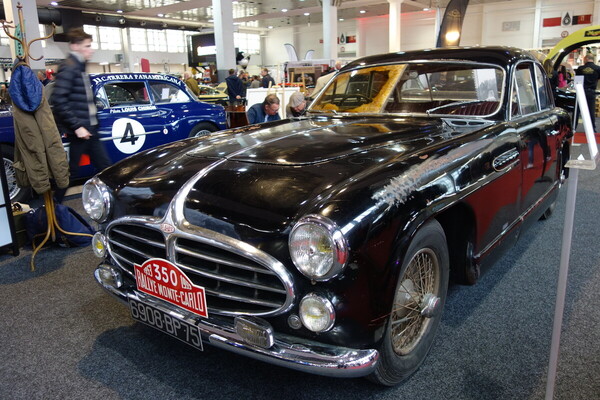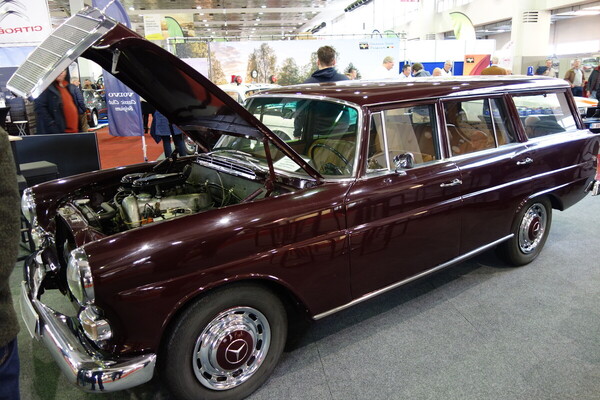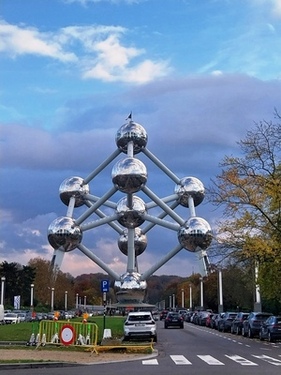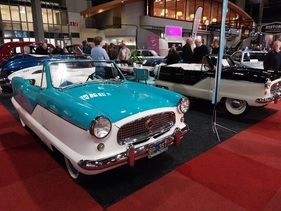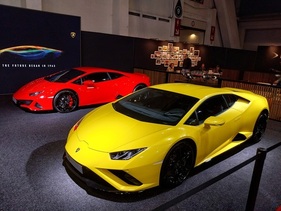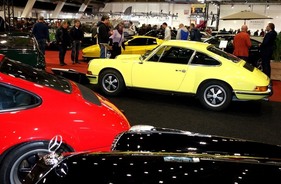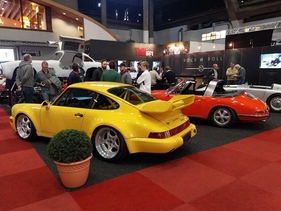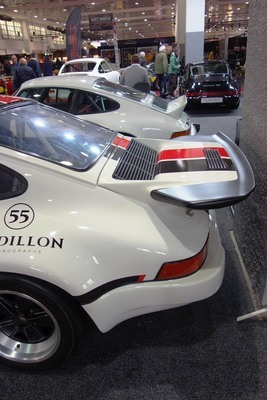Once again, three of the twelve Palais of the "Brussels Expo" were used. This year's Classic Car Show Brussels was once again characterized by a high level of quality. Automobile clubs and interest groups were also well represented in exhibition halls 4, 5 and 6, not least in the "BEHVA Village", which took up a quarter of hall 4. A large special exhibition was dedicated to the theme "100 years of the 24 Hours of Le Mans".

Let us first enter Hall 5, an imposing Art Deco cathedral from 1935, and take a tour. However, this report can only be incomplete in view of the variety on offer. Even on the first day, the cathedral was very busy with visitors. Unfortunately, the lighting conditions were not ideal. This applied not least to the special exhibition at the end of the hall, which was also bathed in reddish light. Here, 25 vehicles were on display, illustrating the racing history of the most famous 24-hour race, starting with a Vinot Deguinand BP 10 HP from 1923 through to the Toyota GR010 Hybrid from 2021. Among other racing cars, a Ford GT 40 (1968), a Porsche 917 (1970), a Peugeot 905 Evo 1 bis (1992), a Cadillac Northstar LMP (2001) and a Dodge Viper LM GTS-R from 2002 were on show.
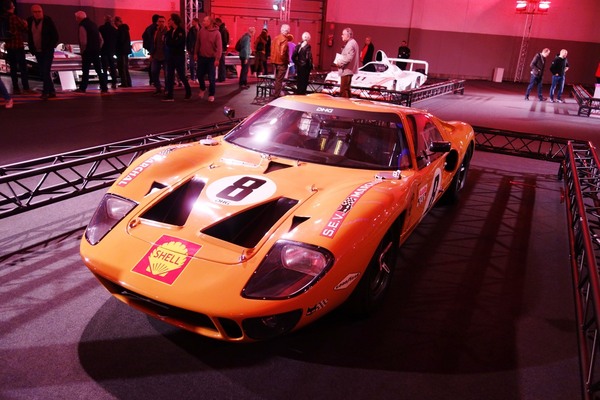
Even though the main hall in particular featured modern luxury vehicles, the mix here was just right. Unlike last year, the range of pre-war classics seemed to be larger this time. In addition to some Delahaye and Delage cars, the range of Bugattis, especially the Type 57, was remarkable. Also worth mentioning is the large Renault Vivastella from 1932, which you don't see every day, even in France. A winning racing car of Belgian provenance also came from the same period: the Impéria Grand Prix from 1930. A former participant in the Monte Carlo Rally should also be mentioned in this context: a Delahaye 235 from 1952.
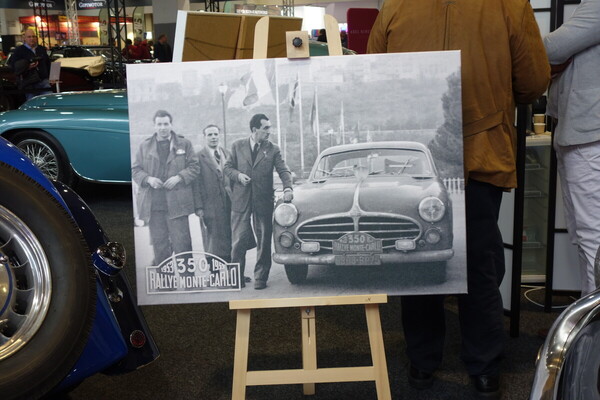
It was astonishing that a Pegaso Z 102 of the second series from 1955 was offered in Brussels. There was also no shortage of Italian brands "from Abarth to Zagato". In addition to various Ferraris, Lamborghinis and Lancias, a Fiat 1100 TV Ghia (1954) and a beautifully designed Alfa Romeo 6 C Super Sport from 1948 were also on display. In the case of a Ferrari 250 GT Boano (1957), the usual "price on request" declaration was dispensed with. Instead, the car was listed directly at 1.3 million. The opposite pole was marked by a small Lancia Ardea (1952) for 9300 euros.
Low mileage, high price
As expected, British cars were very widely represented, whether they were Alvis, Aston Martin, Bentley, Jaguar, Land Rover, Lagonda or Rolls-Royce. An Allard K2, Bristol or a Peerless GT were not missing either.

Porsche also offered early examples from the range of 911 models, such as a 1965 model for 219,900 euros. Even older Porsches were also on offer, such as two 356 A models (both from 1958) for 172,000 and 150,000 euros respectively. The range of Mercedes-Benz models on offer was wide and varied, starting with everyday classics such as a 123 saloon with 83,163 km on the clock, which cost 23,500 euros. However, there would also have been a 190 E 2.6 for 13,000 euros plus a 280 S (W 126) for 11,000 euros negotiable. G-series models were also on offer.

There was also no shortage of BMW cars. In Brussels, there were several cars from the 02 series and the three-series. The range extended to the 635 CSI Group 2 (1980) for 425,000 euros and the M1 and 507. In this context, a rare saloon built in Eisenach in 1950 as the BMW 340-0 and not yet as an EMW should also be mentioned. If you were looking for something rare for less money, you could also have found a BMW 700 LS for 17,750 euros. Which brings us to other rarities. An NSU Type 110, a Glas 1700 GT, a Renault Caravelle, but also a Lada or a Volkswagen Polo Harlekin were on offer. Once again, there were some cars with low mileages to discover. For example, a Fiat Panda 4 x 4 (1997) with only 9178 km or an Audi TT (1999) with 55,000 km on the clock. The Metropole company even offered a Citroën 2 CV with only 21 km on the clock for 42,500 euros. For around a quarter of this price, however, there was also a "Wellblechte" from 1959, including the knowledge that this is called a "Ribbelkap" in Dutch.
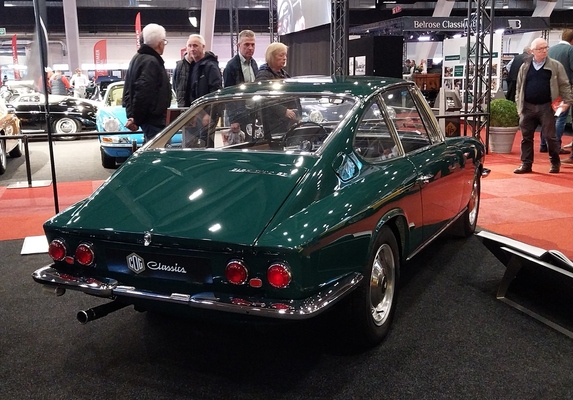
The group of American cars includes a Hudson Commodore from 1949, a Ford Thunderbird from 1962 and a Chevrolet Corvair Monza Spyder Convertible. Not forgetting a 1962 Studebaker Avanti with supercharger, which was offered for 69,900 euros.
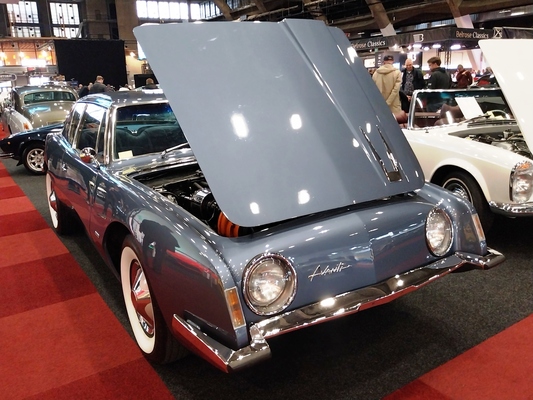
There was no shortage of curiosities either. For example, there was a Hrubon, a very shortened Mini Moke produced in small series. And the make of one exhibit was already unclear! Was it a "Jansens from 1902" or something else? Let the public find out, please.
Small Bugatti and fake Ferrari
But not all the exhibits were for sale. For example, the Axel Schütte company exhibited an Aston Martin V8 Shooting Brake and a black Ferrari 340 Berlinetta as well as a Bugatti Type 35 A that was not for sale.
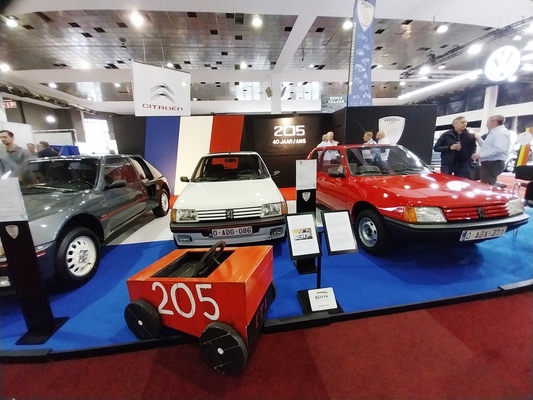
The club stands were also remarkable again, two of which are mentioned here as examples: The "Belgische Club voor oude Peugeot's" with its presentation "40 years of Peugeot 205" and the Belgian Mercedes-Benz Club, which showed a 200 Universal from 1967. This was built by the Belgian company IMA and was also briefly offered on the German market. The Belgian company d'Ieteren reminded visitors that it has been the exclusive representative of Volkswagen in Belgium for 75 years and exhibited examples from this period, including a 1973 Passat LS Automatic, starting with a dark blue pretzel beetle from its collection.
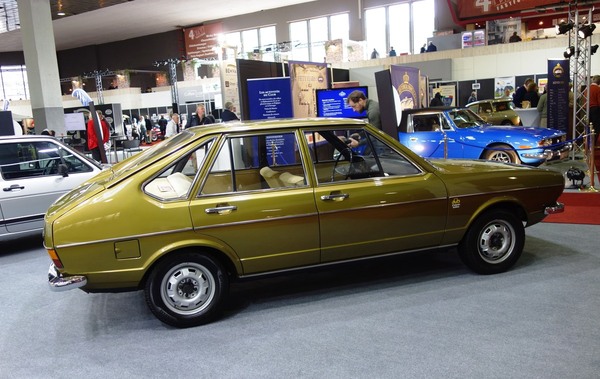
There were also gems on a smaller scale: a Bugatti Type 52 - a children's version of the Type 35 on a scale of 1:2 - was available for 19,500 euros. For a larger scale, the "Baby 3" (modeled on the Bugatti Type 59), around 40,000 euros were already due. Speaking of small vehicles: readers are probably familiar with the tiny Brütsch (not "Brütch") Mopetta. In Brussels, a replica was offered for 25,000 euros. If you were prepared to pay more for replicas, you could have bought a replica of the Ferrari 250 GTO based on a Porsche 944 Turbo for 130,000 euros. The vehicle offered as the "BMW Veritas 315" was certainly also an eye-catcher. It is based on a BMW 315 from 1935, has a Dutch registration from 1953 and was built with BMW parts in the style of a Veritas RS 2000.
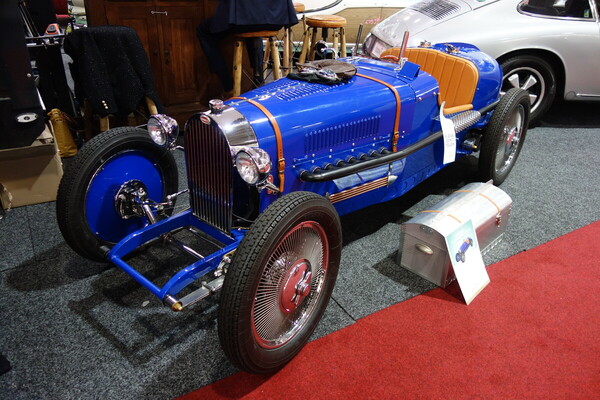
Do we actually need larger classic car shows? This is what the reporter asked himself as he left the Classic Car Show Brussels with a view of the Atomium in the evening light. Certainly not if you only plan one day. Because this trade fair offers everything, and at a high level. Many visitors probably saw it that way too, as the show achieved a new record result with 26,865 visitors in three days. The fact that the entire event was completely cash-free will probably take some getting used to.












